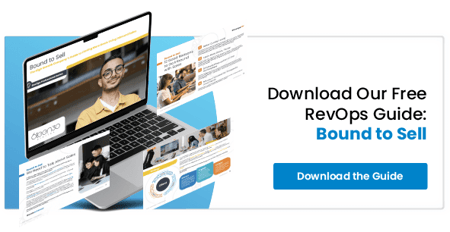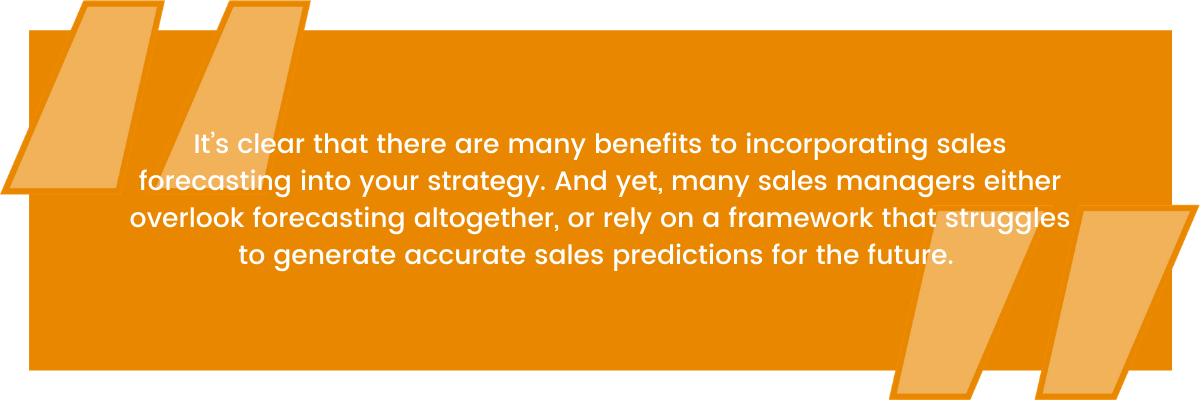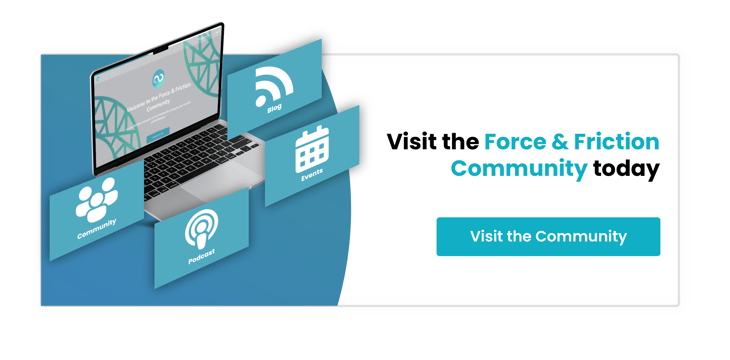
How to Create a Sales Forecast - A 10-Step Framework to Measure Your Pipeline More Accurately
Sales forecasting - when done correctly - can be a hugely valuable tool. Having a good idea of what your team will sell over the next week, month, or year can help you to make smarter, more informed decisions about practically all aspects of your inbound sales operations.
For example, an accurate sales forecast can help you to set more achievable targets for your sales rep. It can help you to ensure you have the right resources to meet demand, and it can help you to allocate your budget to drive optimal performance.
Sales forecasting can make it easier for you to identify minor issues and address them before they become major problems. For example, if a rep looks to be coming in significantly under quota, there’s an opportunity to jump in with consultative sales coaching to develop skills that can get that individual back up to where the forecast believes they should be.

Many Sales Forecasts are Wrong

As we all know, sales reps by their very nature are optimistic. And while this is a good quality for selling, it’s not always a good quality for predictions, resulting in over-optimistic forecasts that create unreachable targets for your team. There are two incredibly common mistakes that sales teams make that can impact forecasting:
- Opening sales opportunities too soon. A big part of forecasting is using historical data to predict future sales. When sales reps open opportunities too soon, it appears as though there are more quality prospects in the pipeline than there really are. This can cause the forecasting model to overestimate future sales.
- Leaving opportunities open too long. It is vital that sales reps know when to let go and take a step back. When low quality leads are left in the sales pipeline for too long, the forecasting model again sees a large number of prospects in the mix, even though sales reps know that these low quality leads are unlikely to close.

10 Steps to Building an Accurate Sales Forecasting Framework
Many sales forecasts are wrong. But that doesn’t mean you should walk away. The advantages of sales forecasting are clear and abundant. So it’s much more effective to work to create a sales forecasting framework that delivers accurate, realistic results and delivers on your inbound sales process.
Here is a simple 10-step process to designing a forecasting model that really works:
- Start with your sales pipeline - It’s impossible to create a forecasting model if your sales pipeline isn’t robust enough to support it. Focus on sales processes first - ensure your team is keeping accurate records, and following your sales pipeline action plan - and work on forecasting second. If your pipeline isn’t realistic, your forecast won’t be.
- Know what you’re forecasting - Be clear on exactly what it is that you want to predict. Are you looking to see how many deals your team will close over X months? Or do you want to know how much revenue your team will pull in? By knowing what you want your model to achieve, it’s easier to build a framework that’s truly goal-oriented.
- Look at historical data - Although you can’t rely exclusively on historical data (aspects such as new product launches, changing trends, and hiring can all affect the reliability of your historical data), your existing sales records can be used to form a good foundation, highlighting past performance to predict future sales and success rates.
- Use forecasting tools - While you may think you can do it all yourself, consider the huge amount of data that must all be pulled together, combined, and analysed to produce a realistic forecast. It’s too much for you to do yourself, and there’s a big risk of human error. Forecasting tools automate data analysis for more accurate forecasting.
- Incorporate qualitative data - Quantitative data is perhaps the most valuable when it comes to sales forecasting, but that doesn’t mean you should overlook qualitative data. By introducing a little bit of guesswork based on your own observations about customer behaviours, you can make your forecasting model more tailored to you.
- Consider market trends - Buying trends and behaviours are constantly shifting, which means it’s vital to consider how tomorrow’s trends could impact today’s forecasting. It’s worth keeping up-to-date with the latest industry news to determine whether certain products will be big sellers in coming months. Also think about seasonal changes, too.
- Get everyone involved - How much your sales team sells - and how much revenue it pulls in - isn’t just down to your sales reps. A number of different departments can impact and influence the buyer journey, so it’s important to bring in data from different areas, namely marketing and customer success teams who are most closely involved.
- Hope for the best, prepare for the worst - It’s a good motto, and it’s one that can help you create an accurate and balanced sales forecasting model that incorporates sales rep optimism without generating unattainable quotas. Consider both the best case and worst case scenarios for the forecasting period, and aim for somewhere in between.
- Create your first sales forecast - Start small. Use the framework you’ve built to create a short term sales forecast covering the next week or the next month. At the end of the period, analyse results to assess how accurate your sales forecast was. This provides an opportunity for you to tweak your forecasting model to help it to deliver realistic results.
- Don’t forget about your model - What’s the point in developing a sales forecasting model if you’re never going to use it? While you must understand that your forecast is just that - a forecast - you can still use it to guide your decision making across a huge variety of areas, and ensure you have access to important information to help you.
The Most Important Thing of All…?
Don’t keep your sales forecast hidden away in the sales department. While it may be a ‘sales’ forecast, it can be beneficial to many different areas of business. They provide very detailed insight into sales team performance, projected revenue, and possible business trends, so ensure your forecast is shared with directors, the board, and company stakeholders, who can all benefit from the information within the forecast.







%20-%20Teal.png?width=500&height=130&name=Force%20%26%20Friction%20-%20Branding%20-%20Logo%20(White)%20-%20Teal.png)